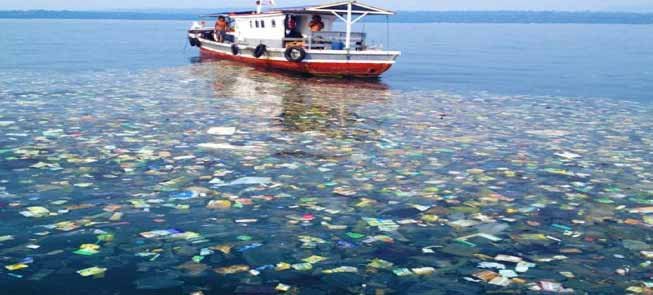Hundred of years are required to break down plastic into less harmful substances, and, unfortunately, it’s already killing fish and sea animals. According to data, plastic in our oceans increased dramatically from 16 trillion pieces in 2005. Shockingly, if no action is taken, this figure could nearly triple by 2040, as warned by scientists.
Last week nations joined together to sign the historic U.N. High Seas treaty. This treaty aims to protect at least 30% of our oceans and the life within it. The scientists who made this estimate looked at records from 1979 and added more recent data on expeditions that trawl the seas with nets to collect plastics.
A whopping 171 trillion pieces of plastic are floating around in our oceans, as lead author Dr. Marcus Eriksen from the 5 Gyres Institute discovered. These pieces include newly discarded plastics and older pieces that have broken down over time due to sunlight or mechanical degradation. Shockingly, single-use items like bottles, packaging, fishing equipment, and other disposable items all contribute to this massive plastic waste.
Our marine animals often mistake these plastic pieces for food and ingest them. Whales, seabirds, turtles, and fish are just a few examples of wildlife suffering from plastic ingestion, which can ultimately lead to starvation as the plastic fills their stomachs.
It’s not just our marine life affected by plastic waste – it’s also making its way into our drinking water! Microplastics, tiny fragments of plastic that have broken down, have been found in human lungs, veins, and even the placenta. The scary thing is scientists are still unsure about the long-term effects of microplastic exposure on human health.
Plastic in oceans increased dramatically from 16 trillion pieces in 2005 to 171 trillion pieces in 2019. It’s a concerning trend that shows no signs of slowing down unless we take action. Let’s make a conscious effort to reduce our plastic consumption and protect both our planet and our health.
According to Dr. Eriksen’s study that before 2005 the concentrations fluctuated. Although, we don’t know the exact cause of plastic-exhausted oceans. But, one thing that is clear like a summer day is that our oceans continuously receive tons of consistent plastic waste.
He said in an interview,
“We are all agreed there is too much plastic in the ocean. We urgently need to move to solutions-focused research,”
The ocean plastic problem is particularly severe in the North Atlantic sea. Large floating masses of plastic have been discovered in various locations, such as the notorious Great Pacific Garbage Patch.
In the 1980s, various international agreements declared it illegal to dispose of fishing and naval plastics in the ocean, requiring them to remove a specific amount of existing waste. This agreement did not become successful, which again caused to fill the oceans with plastic waste around 2000 A.D.
The study suggested that the world should reduce plastic production instead of recycling. Moreover, the clean-up of oceans is also not a cost-effective way to get rid of the problem.


